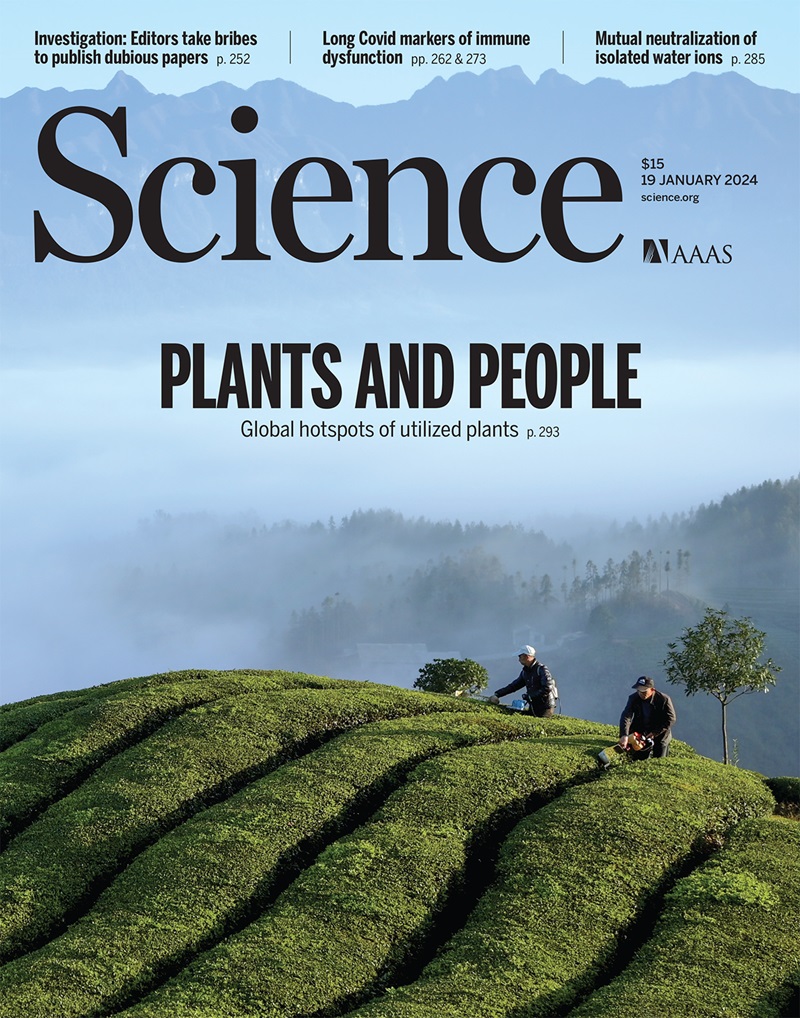在情绪传染过程中,哈贝纳拉释放的羟色胺能促进恢复能力。
IF 44.7
1区 综合性期刊
Q1 MULTIDISCIPLINARY SCIENCES
引用次数: 0
摘要
负面情绪传染--目睹他人陷入困境--会影响个体的情绪反应能力。然而,当面临未来威胁时,负性情绪传染是否会影响应对策略仍是未知数。我们发现,当小鼠短暂观察到同类受到伤害时,它们会变得很有韧性,在经历不幸后仍能承受行为上的绝望。在负面情绪传染过程中进行的光度记录显示,外侧哈文脑中的血清素(5-HT)释放增加。5-羟色胺和情绪传染会减少哈贝拉突发性发射,而限制5-羟色胺的合成则会阻止突发性可塑性。增强剑突至哈文脑的5-羟色胺足以重现恢复力。相反,减少哈贝纳拉中的5-羟色胺释放会使目睹同类陷入困境无法有效促进逆境后的复原表型。这些研究结果表明,5-羟色胺支持代入性情绪,并通过调整哈氏神经元活动的明确模式而导致复原力。本文章由计算机程序翻译,如有差异,请以英文原文为准。
Serotonin release in the habenula during emotional contagion promotes resilience
Negative emotional contagion—witnessing others in distress—affects an individual’s emotional responsivity. However, whether it shapes coping strategies when facing future threats remains unknown. We found that mice that briefly observe a conspecific being harmed become resilient, withstanding behavioral despair after an adverse experience. Photometric recordings during negative emotional contagion revealed increased serotonin (5-HT) release in the lateral habenula. Whereas 5-HT and emotional contagion reduced habenular burst firing, limiting 5-HT synthesis prevented burst plasticity. Enhancing raphe-to-habenula 5-HT was sufficient to recapitulate resilience. In contrast, reducing 5-HT release in the habenula made witnessing a conspecific in distress ineffective to promote the resilient phenotype after adversity. These findings reveal that 5-HT supports vicarious emotions and leads to resilience by tuning definite patterns of habenular neuronal activity.
求助全文
通过发布文献求助,成功后即可免费获取论文全文。
去求助
来源期刊

Science
综合性期刊-综合性期刊
CiteScore
61.10
自引率
0.90%
发文量
0
审稿时长
2.1 months
期刊介绍:
Science is a leading outlet for scientific news, commentary, and cutting-edge research. Through its print and online incarnations, Science reaches an estimated worldwide readership of more than one million. Science’s authorship is global too, and its articles consistently rank among the world's most cited research.
Science serves as a forum for discussion of important issues related to the advancement of science by publishing material on which a consensus has been reached as well as including the presentation of minority or conflicting points of view. Accordingly, all articles published in Science—including editorials, news and comment, and book reviews—are signed and reflect the individual views of the authors and not official points of view adopted by AAAS or the institutions with which the authors are affiliated.
Science seeks to publish those papers that are most influential in their fields or across fields and that will significantly advance scientific understanding. Selected papers should present novel and broadly important data, syntheses, or concepts. They should merit recognition by the wider scientific community and general public provided by publication in Science, beyond that provided by specialty journals. Science welcomes submissions from all fields of science and from any source. The editors are committed to the prompt evaluation and publication of submitted papers while upholding high standards that support reproducibility of published research. Science is published weekly; selected papers are published online ahead of print.
 求助内容:
求助内容: 应助结果提醒方式:
应助结果提醒方式:


